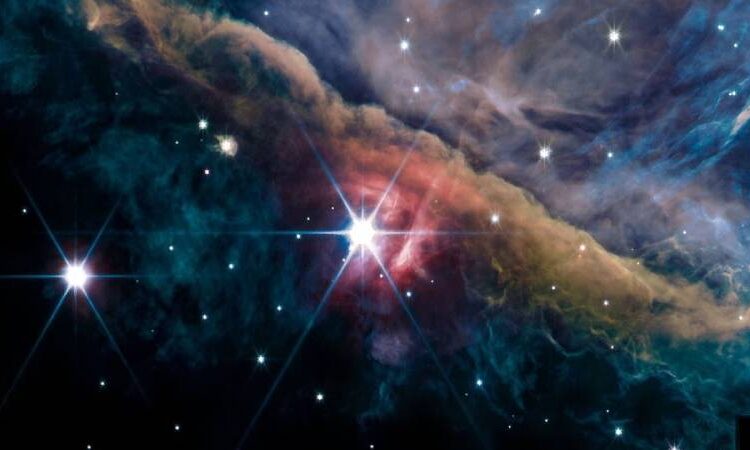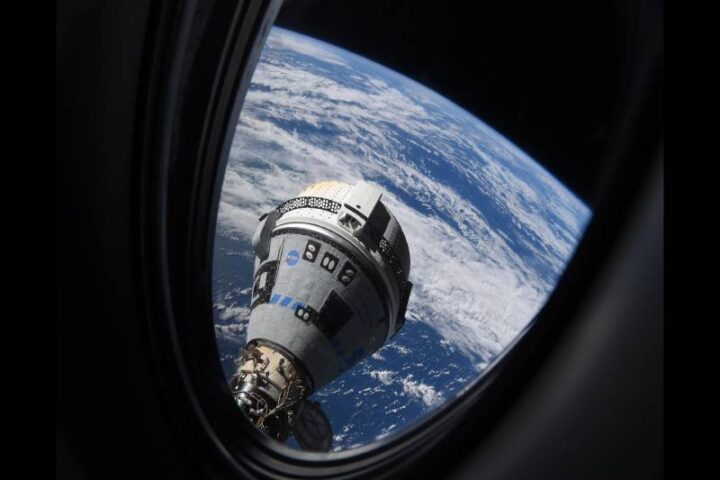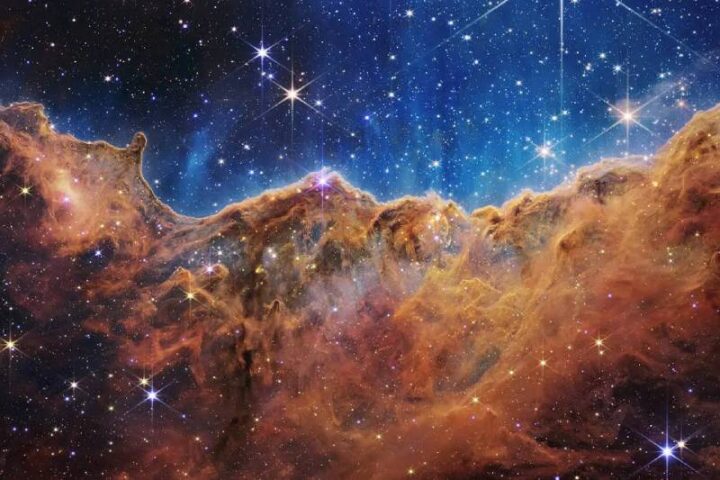The James Webb Space Telescope, a collaborative effort between NASA, ESA, and the CSA, has captured stunning wide-angle images of the Orion Nebula, and these remarkable visuals have been integrated into ESA’s ESASky application. ESASky offers an intuitive interface for the exploration and retrieval of astronomical data.
The Orion Nebula, also known as Messier 42, is one of the most prominent nebulae in the night sky, situated to the south of Orion’s belt. Nestled within its core is the youthful Trapezium Cluster, home to the most massive stars that bathe the surrounding gas and dust in intense ultraviolet radiation. Meanwhile, within the OMC-1 molecular cloud behind it, protostars are still forming today.
This nebula is a treasure trove for astronomers, providing a diverse range of phenomena and objects to study, including young stars with outflows and planet-forming disks, embedded protostars, brown dwarfs, free-floating planetary mass objects, and photodissociation regions—where the radiation from massive stars shapes and influences gas chemistry.
The new imagery was captured using Webb’s near-infrared camera, NIRCam, resulting in two expansive mosaics—one from the short-wavelength channel and one from the long-wavelength channel. These mosaics, among the largest observed by Webb to date, have been incorporated into ESASky, facilitating effortless exploration of the numerous captivating astronomical sources they contain. The short-wavelength mosaic unveils intricate details in disks and outflows with Webb’s exceptional angular resolution, while the long-wavelength mosaic highlights the complex network of dust and organic compounds known as polycyclic aromatic hydrocarbons. We invite you to delve into these images to uncover the hidden treasures they hold.
These scientific observations were acquired as part of Webb’s Cycle One programme under the identifier #1256.
ESASky is the platform to explore these captivating images, enabling users to pan, zoom, and discover intriguing celestial objects.
For more information, Webb stands as the most substantial and potent telescope ever launched into space. ESA played a crucial role in its launch, using the Ariane 5 launch vehicle, as per the international collaboration agreement. ESA also oversaw the development and qualification of Ariane 5 adaptations for the Webb mission, along with procuring the launch service through Arianespace. Additionally, ESA contributed the essential spectrograph NIRSpec and 50% of the mid-infrared instrument MIRI, a collaborative effort involving European Institutes, JPL, and the University of Arizona.
Disclaimer: The views, suggestions, and opinions expressed here are the sole responsibility of the experts. No Euro Tidings journalist was involved in the writing and production of this article.





